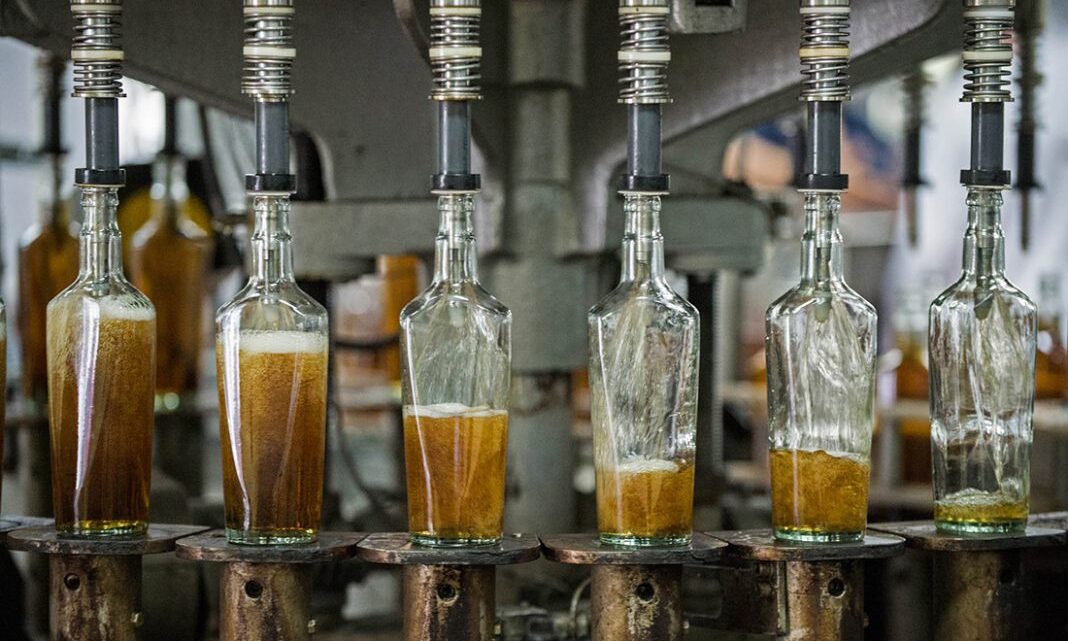The Artisanal Rum Renaissance and Game-Changing Distilleries

Rum, with its deeply rooted roots in Caribbean culture and its influence that spans the globe, has long been a cherished spirit for amateurs and connoisseurs alike.From the days of pirates to modern cocktail bars, this drink has evolved, experiencing variations in taste, process and presentation. However, in recent decades, we have witnessed a particularly intriguing renaissance: the rise of artisanal rum. Unlike the mass-produced versions that dominated the market during the 20th century, artisanal rum emphasizes authenticity, quality, and respect for ancestral traditions, offering enthusiasts a deeper, more nuanced flavor experience.
This rebirth is not simply a passing fad or a market shift to “retro.” It is a testament to the growing appreciation for distilleries that value craftsmanship, integrity, and connection to terroir.
The Golden Age of Artisanal Rum
The move towards artisanal rum can be seen as a natural response to an industry that, for a long time, leaned towards mass production. In previous decades, the focus was on meeting global demand with bulky productions, often sacrificing quality and uniqueness in the process. But as with many products, when production is standardized, a certain essence is lost, a certain connection with roots and tradition.
The golden age of artisanal rum that we live today is a rediscovery of those roots. It is a revaluation of traditional methods, authentic ingredients and the rich and complex history that each bottle can tell. Instead of large distilleries that produce thousands of litres per day, we see the emergence of small, often familiar distilleries that take their time, take care of every step of the process and seek to reflect the true essence of their origin in their final product. These distilleries are reviving ancestral techniques, using almost forgotten sugarcane varieties and experimenting with fermentation and maturation processes that result in rums with unique character and personality.
What makes a Rum handcrafted?
The word “craft” has become a popular term in many industries, from food to fashion, and the need has arisen to define what rum really means. Craftsmanship, at its core, refers to the manual and detailed creation of products, with special attention to detail, quality and tradition. In the context of rum, this translates into several key aspects that define craftsmanship.
First and foremost, there’s the basic ingredient: sugarcane. An artisanal rum usually prioritizes the use of local cane varieties, often grown sustainably, and harvested at the optimal time of maturity. These reeds, unlike the massively cultivated varieties, provide distinctive flavours and aromas that are reflected in the final rum.
The fermentation process is another distinguishing factor. While large distilleries may rely on commercial yeasts and accelerated processes, artisanal distilleries often opt for natural fermentations or use indigenous yeasts. These fermentations can be longer and at controlled temperatures, allowing the development of richer and more complex aromatic profiles.
Distillation is an art in itself. Artisanal distilleries tend to use traditional stills, either pot or column, but with manual controls. This allows the master distiller to make precise cuts, selecting only the fractions of the distillate that offer the best flavors and aromas.
Finally, maturation. A craft rum does not rush. Whether in oak barrels, wooden tubs or even ceramic containers, rum is left to age patiently, absorbing the characters of the container and the surrounding environment, and evolving over time.
Pioneering Distilleries in the Artisanal World
The world of artisanal rum, although rooted in tradition, is also a space for innovation and reinvention. Behind this revolution are pioneering distilleries that, with their passion and commitment, are redefining what we know about this spirituous beverage. These distilleries are beacons of authenticity in a sea of mass production.
One of the undisputed leaders in this field is Rhum Clément in Martinique. With a history dating back over a century, this distillery has maintained a production of agricultural rum following French traditions, with a focus on specific varieties of cane and distillation processes that reflect the essence of its terroir.
We cannot forget the Foursquare Distillery in Barbados, whose focus on transparency and authenticity has cemented its position as one of the most respected distilleries in the rum world. Its limited and experimental editions have been acclaimed by both enthusiasts and experts alike.
In Barbados, we also find St. Nicholas Abbey, a distillery that stands out not only for its high-quality rum production but also for its historical architecture and stunning gardens, offering a complete experience that goes beyond rum tasting.
Traveling to Puerto Rico, we find San Juan Artisan Distillers, where Caribbean heritage meets an undeniable dedication to the art of distillation, offering products that are true artisanal gems, in which every detail counts, from the selection of ingredients to the meticulous production process.
Meanwhile, in Jamaica is situated Worthy Park, a true testimony to the Jamaican art of distillation. With a tradition dating back several decades, this distillery has remained true to traditional processes, offering rums that are a genuine expression of their origin, noted for their robust and authentic character.
Beyond the Caribbean, distilleries in places like Australia and Asia are also making waves in the industry. Beenleigh Artisan Distillers in Australia, for example, uses local sugarcane and traditional methods to produce rums with a distinctively Australian character.
Through these distilleries, rum lovers can embark on a journey that will take them through different cultures and traditions, all through the tasting of top-quality artisanal rums, a journey where each sip tells a story.
The Terroir Connection
The concept of “terroir” is widely recognized in the world of wine, referring to how a specific place (from its soil and climate to its practices and traditions) influences the character of what is produced. Although not traditionally associated with rum, this concept is increasingly relevant in the context of artisanal rum.
Rum, being a distillate created from sugar cane, is deeply influenced by where that cane is grown. Different soil types, from volcanic soils to sandy plains, will impart distinctive flavours and characteristics to the cane, which will later be reflected in the final rum.
For example, sugar cane grown in the rich volcanic lands of Martinique will give life to rums with mineral notes and a certain freshness. On the other hand, a rum from reeds grown in the coastal plains of Guyana may have a more robust and earthy profile.
Beyond the ground, climate plays an essential role. Fluctuations in temperature, humidity, and rainfall can influence cane ripening, fermentation, and eventually the aging process of rum. For example, a rum aged in the humid tropical climate of the Caribbean will ripen differently than one aged in a more temperate climate.
Finally, local traditions and techniques are also components of terroir. The decision to use spontaneous fermentation, distillation in pot stills or aging in specific barrels are choices rooted in the history and tradition of a place, and all contribute to the distinctive character of rum.
The Modern Consumer
The rise of artisanal rum would not be understood without the fundamental role of the modern consumer. Today, there is a growing demand for authentic, sustainable products with a history behind them. People are no longer just looking to enjoy a drink, but also to understand its origin, its production process and the values of the brands behind it.
The digital age has facilitated access to information, allowing consumers to become more educated about what they consume. Curiosity leads many to immerse themselves in the world of rum, discovering not only its flavours and aromas, but also the associated traditions and cultures. On this journey of discovery, artisanal rums, with their rich narrative and focus on quality, resonate strongly with this informed consumer.
In addition, there is a growing concern about sustainability. The modern consumer is increasingly aware of the environmental and social impacts of their purchasing decisions. Artisanal distilleries, with their focus on sustainable farming practices, small-scale production and connection to local communities, offer an attractive alternative to mass-produced rum.
Challenges and Opportunities for the Rum Craft Industry
While the growing popularity of artisanal rum opens up endless opportunities, it also presents significant challenges that the industry must face to ensure sustainable growth and maintain authenticity.
Challenges
1. Sustainability: Artisanal production, by its nature, often has a lower yield than industrial production. The challenge lies in maintaining sustainable practices without compromising quality, especially when it comes to resource management and sugarcane cultivation.
2. Economy of scale: Artisanal distilleries, due to their size and limited production, face economic challenges to compete on price with larger producers.
3. Consumer education: Despite a growing interest, there is still a lack of knowledge about what “handmade” really means. Educating the consumer about the particularities and values of artisanal rum is essential to establish a genuine appreciation.
4. Regulations: As artisanal rum gains popularity, questions arise about how it should be regulated and labelled, to ensure consumers receive clear and transparent information.
Opportunities:
1. Market Diversification: The rise of artisanal rum creates opportunities to explore niche markets and satisfy consumers looking for unique and authentic experiences.
2. Collaborations: Distilleries can collaborate with each other, experts in other industries, or educational institutions to drive innovation and education around rum.
3. Tourism: Craft distilleries can become tourist destinations, offering tours and tastings that educate visitors about the production process and the history of rum.
4. Added Value: Through limited editions, special collaborations, and unique presentations, craft distilleries have the opportunity to add value to their products and attract an audience willing to pay a premium for an authentic experience.
Conclusions
The renaissance of artisanal rum is a testament to the evolution of the consumer’s palate and the desire for deeper connections with what we consume. As society moves away from mass production and closer to the authentic, the local and the sustainable, artisanal rum stands out as an emblem of this transformation.
Sources
1. The Rum Lab
5. American Distilling Institute
6. Rumporter
10. Google Scholar
11. Wikipedia
Featured image: Freepik
About The Author
Camilo is an audiovisual communicator with over 15 years of experience. He resides in Caracas, Venezuela, and has studied film and television, acquiring skills in writing film scripts. He currently works as a Digital Content Manager at TRL. If you would like to see his portfolio, you can visit his website at http://ccesarino.com.













